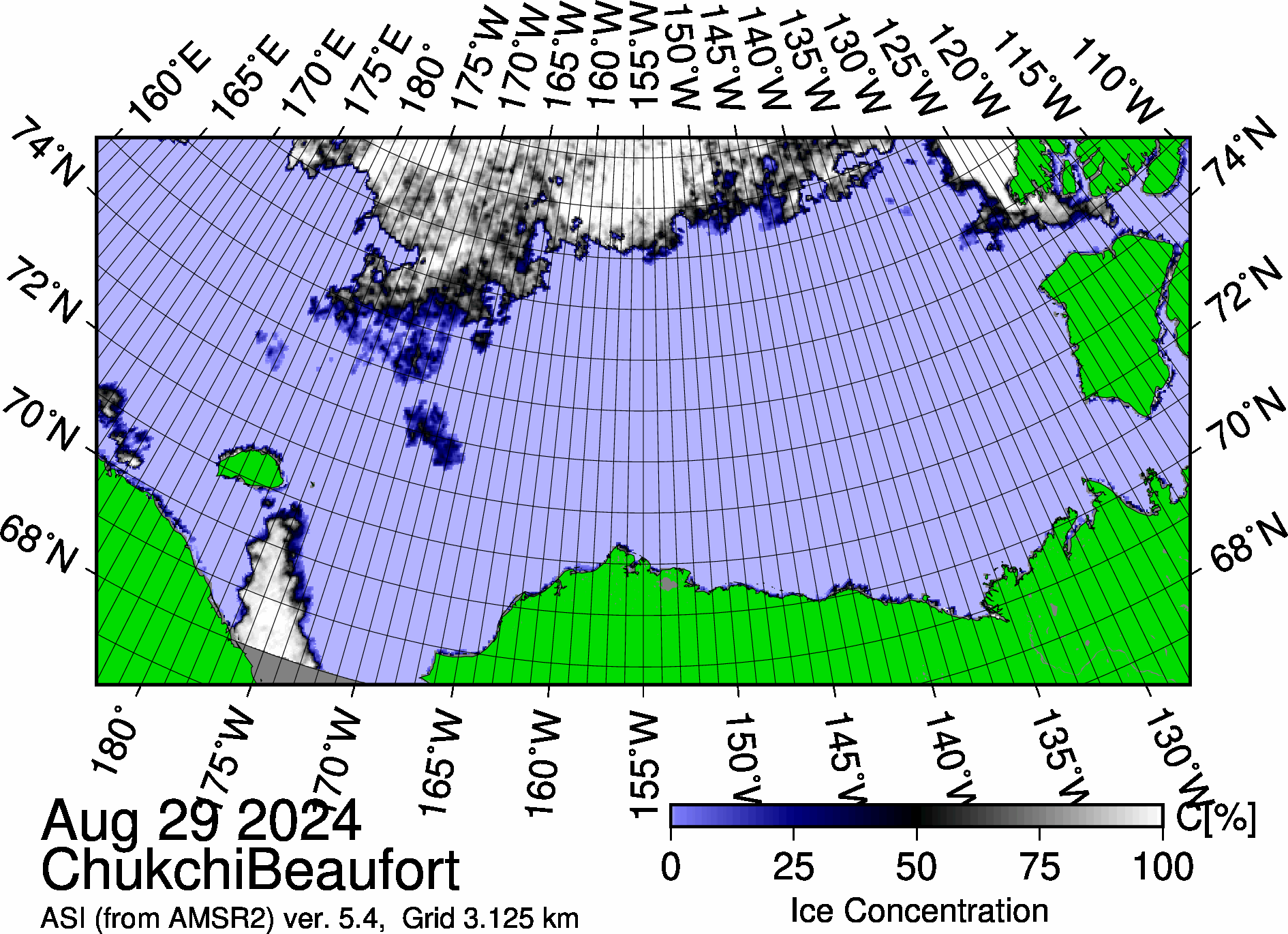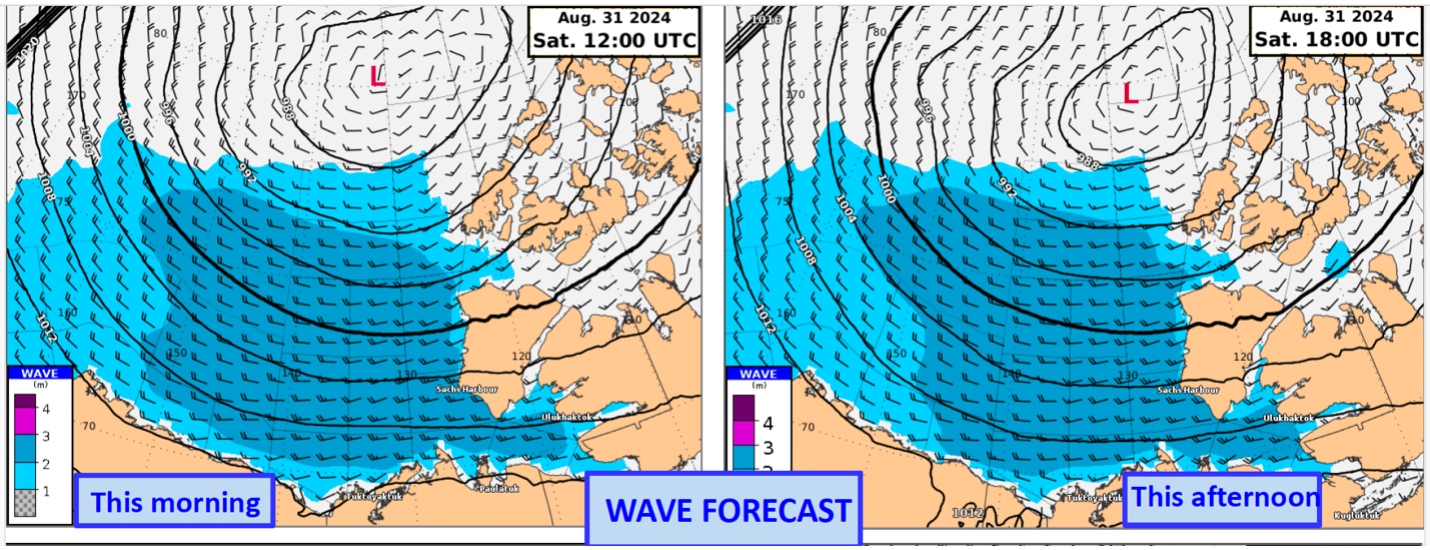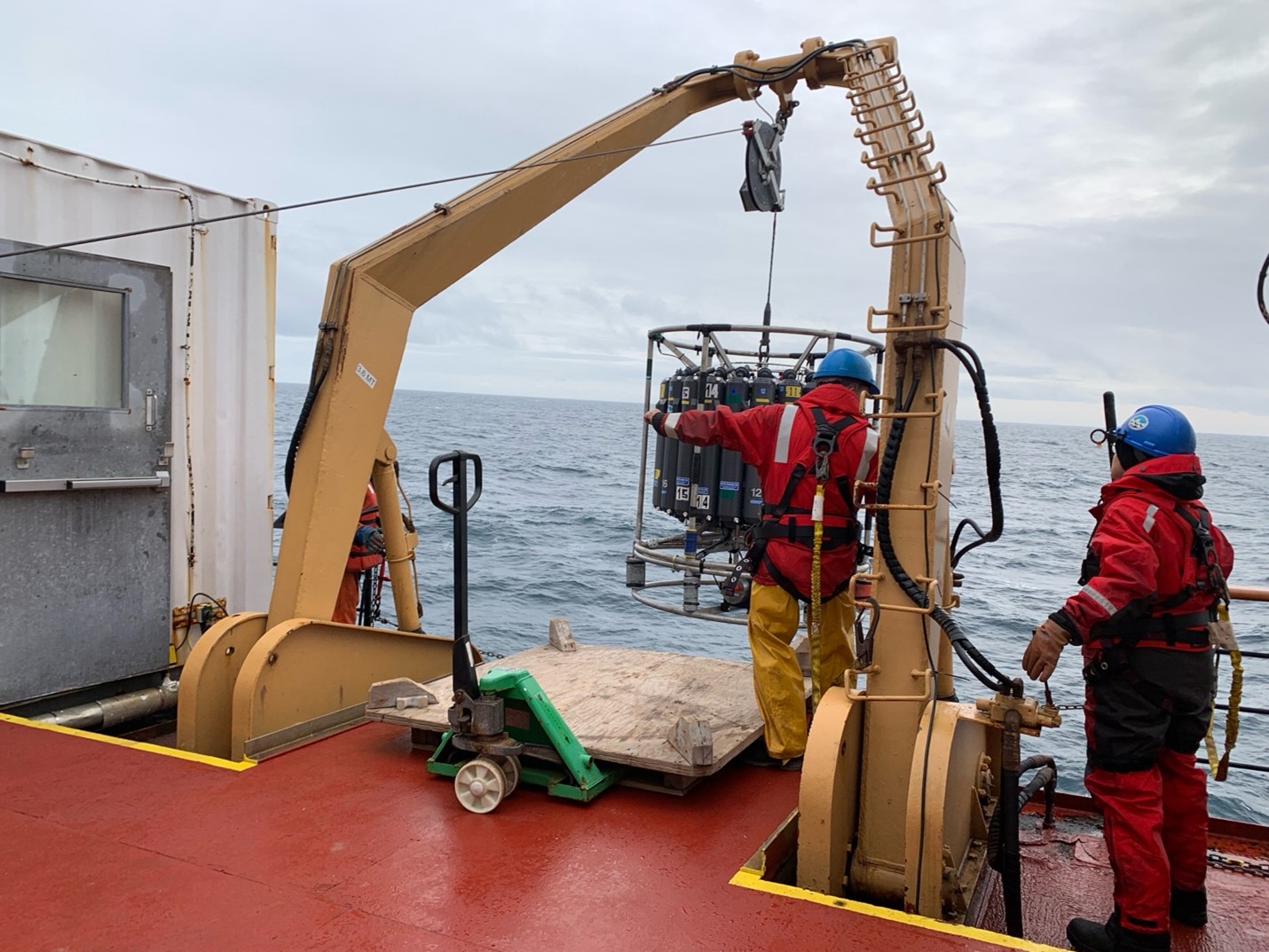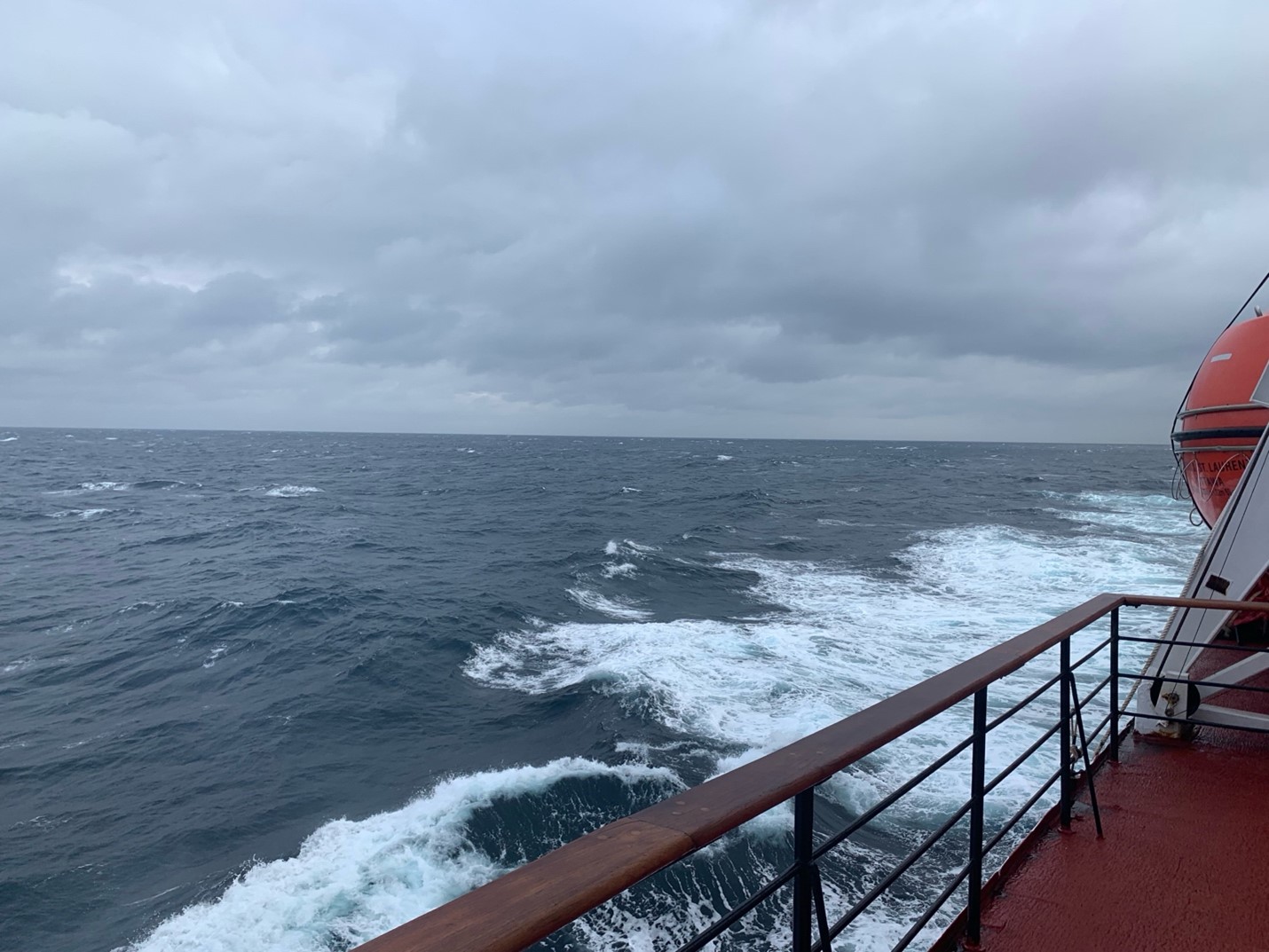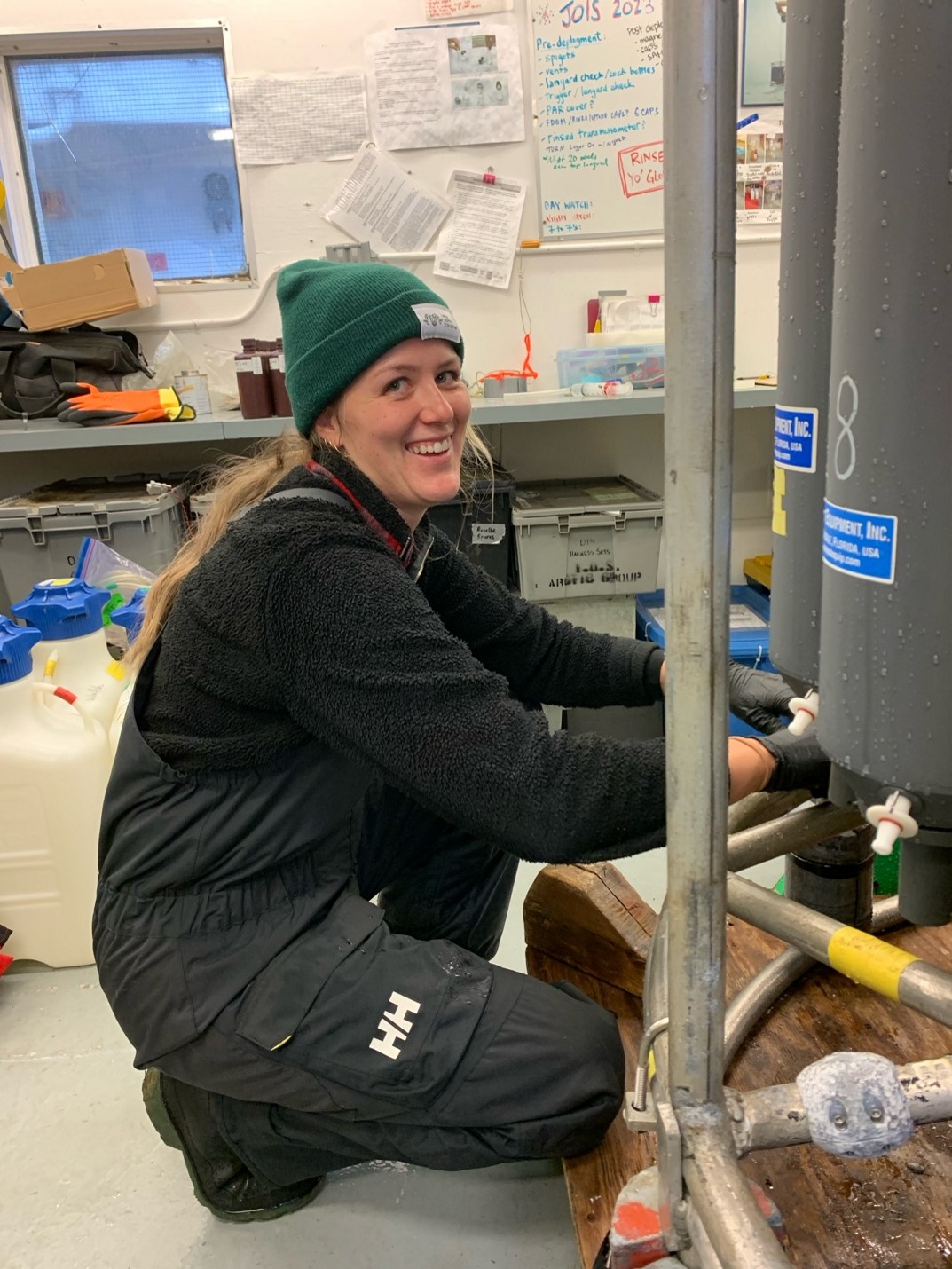Dispatch 2: Stormy Science
Ashley Arroyo (Yale University)
August 31, 2024
23:30 UTC, 70.5°N 122.9°W
Conditions:
- Mostly cloudy with some rain
- 0% sea ice cover
- 6 °C
- Winds 30 knots westerly
- Sunrise: 31-Aug-2024 06:21:17 -06
- Sunset: 31-Aug-2024 22:05:14 -06
- Day length: 15hour 43min 58sec
Throughout the early morning and into the night, we experienced very stormy seas, which were due to a low-pressure system in the Beaufort Gyre region which gave rise to strong westerly winds. In preparation for the rough seas, the science team took precautions which included tying down and securing lab equipment, computers, and any other items that could shift as the ship rocked back and forth. Despite the rough weather, we were optimistic that we would be able to complete our first CTD station (for more information on CTD casts, see the previous dispatch here) in the Amundsen Gulf (AG-5) after supper. To ensure that the operations went smoothly, watch leader Mike Dempsey held a meeting for all the CTD watch standers to demonstrate water sampling and explain CTD operation procedures (for example, ensuring that all the Niskin bottles are prepared, the sensors on the rosette are wiped down, and the rosette is rolled out and sent over the side of the ship safely and properly).
We arrived at station AG-5 around 6pm. Given the rough seas and strong winds, there was some debate about whether we should deploy the CTD rosette; in extremely rough seas, the CTD rosette can swing back and forth, making it difficult to control. Ultimately, the deck crew, the Captain/officers on the bridge, and the science crew all agreed that the conditions were safe to deploy the rosette. The CTD cast went smoothly: we lowered the rosette down to a depth of 628 meters and winched it back up on deck in about an hour, and then began water sampling. Since it was the first CTD cast, there were over 10 people (including both the night and day watch standers) in the shack crowded around the rosette, all eager to learn and participate. Tomorrow, the CTD operations crew will officially transition into their respective roles as night watch (midnight to noon) and day watch (noon to midnight). We are scheduled to arrive at our next CTD station (CB-1) around lunchtime tomorrow where the science will continue!
